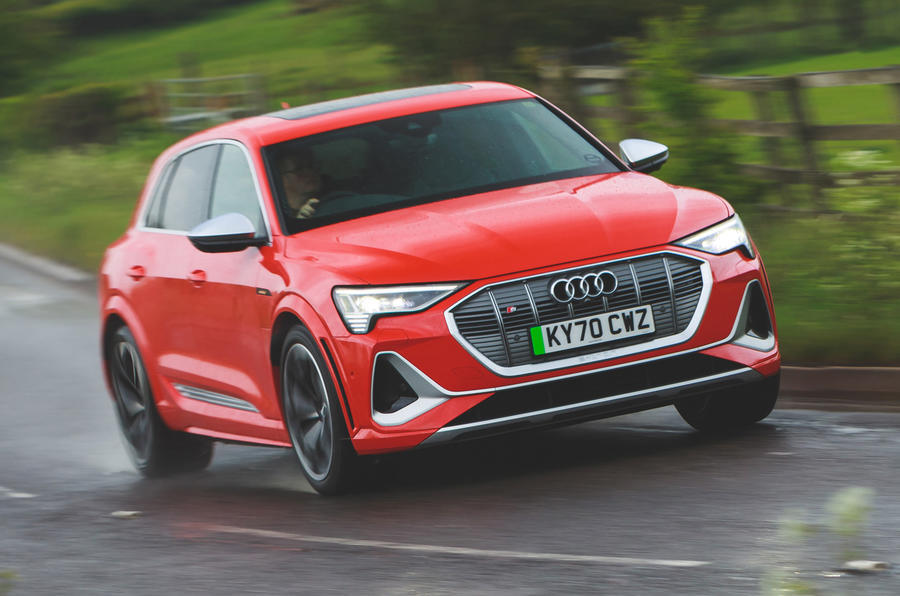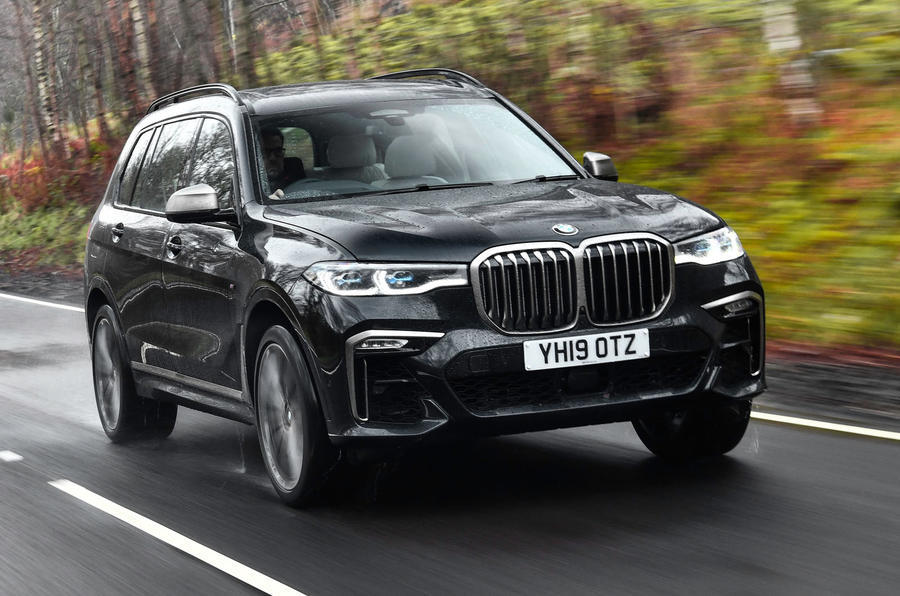Luxury cars – a class comprised in significant proportion of large traditional limousine saloons with one or two oversized hatchbacks and demure SUVs included – are the cars in which high-end executives choose either to drive or to be driven in.
That means they need to offer outstanding comfort both in the front and back seats, a silky smooth ride, excellent drivability and refinement, ample performance – and they must also serve as better status symbols than most things on four wheels. High levels of in-car technology and infotainment are a must, and connectivity systems that will allow such machines to be used as mobile offices are increasingly important.
Range Rover
The current, fourth-generation Range Rover is as revolutionary as any in the car’s history, with an aluminium monocoque chassis and an unashamedly luxurious agenda. Its imperious driving position, superlative luxuriousness and enduringly special cabin make it our top pick in this sub-£100,000 luxury car category.
That it is a luxury car first and 4x4 second is not to run down its capability offroad one jot, however. The spacious interior exudes quality and luxury, the seats are excellent and the driving position is first-rate, making it easy to drive for a car of its size. The heavy bodyshell provides excellent isolation from rough surfaces and, while it doesn’t offer the driving engagement of a Porsche Cayenne, it’s easy to make brisk progress enjoyable should the need arise; because just about any rate of progress feels special in a Range Rover.
Land Rover's engine range still includes six- and eight-cylinder petrol and diesel options, without a weak or under-endowed-feeling option among them. Solihull’s lately-added straight-six diesel engines ought to be a real draw for private motorists, but the one fleet operators will be interested in is the plug-in hybrid P400e (77g/km, 25 miles EV range) which qualifies for company car tax at just 19% BIK.
The Range Rover is big and heavy but its weight and size are small prices to pay for a car of its incredible breadth of ability. Few make you feel as special to ride in, none has better visibility or a more commanding or assured driving position, and very few put a better complexion on your day.
![]()
Mercedes-Benz S-Class
When Mercedes-Benz sets out to make a new S-Class, the brief is to make the best car in the world; simple as that. It has done on every single occasion that this defining ‘big Benz’ has been redesigned over the decades, and the last time that happened in 2020, in a more challenging and fast-changing luxury car market than the car has ever faced, Stuttgart very likely did just the same.
This time, however, Mercedes didn’t quite hit its target right in the bullseye. What could be considered the tenth-generation S-Class risked much in a bid to level up with the digital technology of a Tesla, but to keep its recognisable high-quality feel, its opulent luxury and cabin quality and its uncompromising comfort and refinement.
It almost worked. The S-Class is still one of the most comfortable, enveloping and genteel cars in the world. But its new in-car technologies, though numerous and impressive in some ways (among them is an infotainment screen big enough to belong in the cockpit of an A380), aren’t all easy to operate; they don’t all integrate seamlessly into the car’s driving experience; and some of them feel like they’re affectations rather than enhancements.
While customers of the pricier Mercedes-Maybach S-Class get a choice of V8 and V12 powerplants, the regular limousine can be had as a -350d or -400d diesel, or as a -500 petrol - the latter also getting mild hybrid assistance. The diesels are pleasingly real-world frugal and smooth, and the S400d has all the performance that a car of this brief would ever need in any case; but the S500 offers an even quicker (and yet still suitable quiet and smooth) 400bhp+ option should you want it.
Audi E-tron Quattro
We’re now entering reasonably well-established times for the premium electric car. There have been fast ones, very fast ones, big ones, small ones, expensive ones and cheap, and some that even attempt a bit of four-wheel driven versatility.
But never has an electric car come along and done onboard luxury better than Audi’s first stab at the zero-emissions template: the E-tron Quattro. This car combines four-wheel drive and a commanding outright performance level with SUV-typical space, convenience and usability, and also with Audi brand desirability. But what really makes it stand out is how superbly hushed, comfortable and refined it is. When we road tested one, our decibel placed its cabin noise level closer, at a 70mph cruise, to that of a Rolls-Royce Phantom than a Tesla Model X.
Audi-brand modern luxury comes with state-of-the-art onboard technology too, of course, while the potential for 150kW public rapid charging, combined with an everyday range of between 200- and 250 miles on a charge, also makes the E-tron a more usable electric car than some of its ilk. Right now, there is no more luxurious electric car in the world than this one.

BMW X7
Don’t think of this as an enlarged BMW X5, says Munich, but rather a jacked-up 7-Series that’s been readied for limited off-roading work. That description doesn’t much account for the fact that the X7 is a seven-seat, two-box passenger car with an extended roofline, of course – but it does tell you about the priorities that BMW’s designers and engineers had when it came to refining and tuning the car.
The car comes with a choice of one turbodiesel (the 40d) and two turbo petrol engines (the entry-level 40i and range-topping M50i) in the UK. The ‘M50d’ version of the car used to offer fully 394bhp and more than 500lb ft of torque but has since been dropped, while the V8 'M50i' petrol winds the performance dial all the way out to 523bhp.
On the road, the X7 handles its size and bulk well, feeling surprisingly precise and athletic when cornering. Even the car’s diesel engine is smooth and refined, developing enough torque to move the car along easily, while its ride is comfortable without running out of control. The car manages its mass better than big luxury SUV rivals, and feels more intuitive to drive.
A slightly ordinary cabin, light on special material touches and differentiation from BMW’s lesser SUVs, and that controversial front-end styling are the car’s biggest disappointments. With that oversized grille, some would call the X7 ugly – but few would deny its competence or its completeness as a luxury car.

Original Source: https://www.autocar.co.uk/car-news/best-cars/top-10-best-luxury-cars


Please log in or sign up to comment.